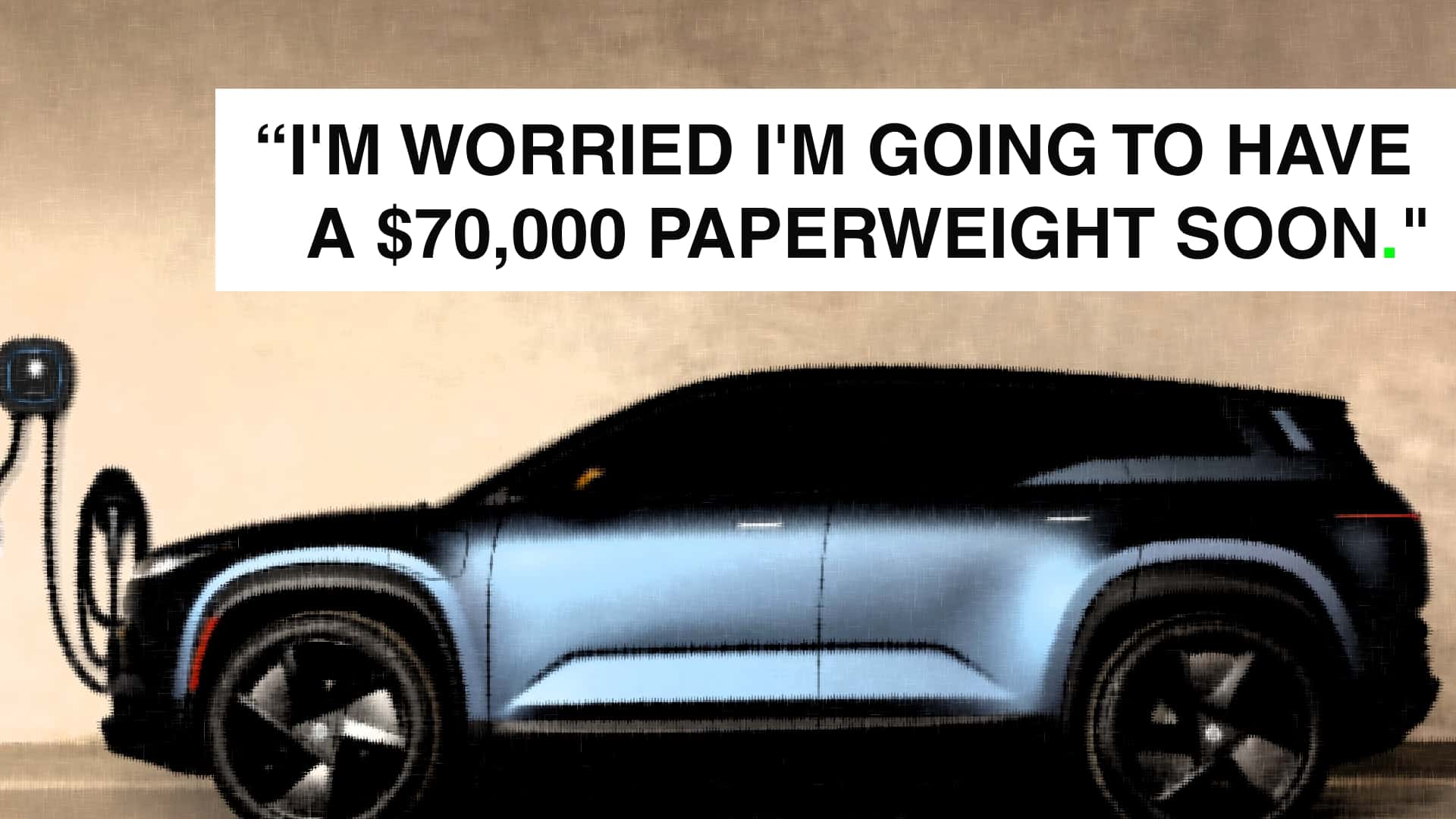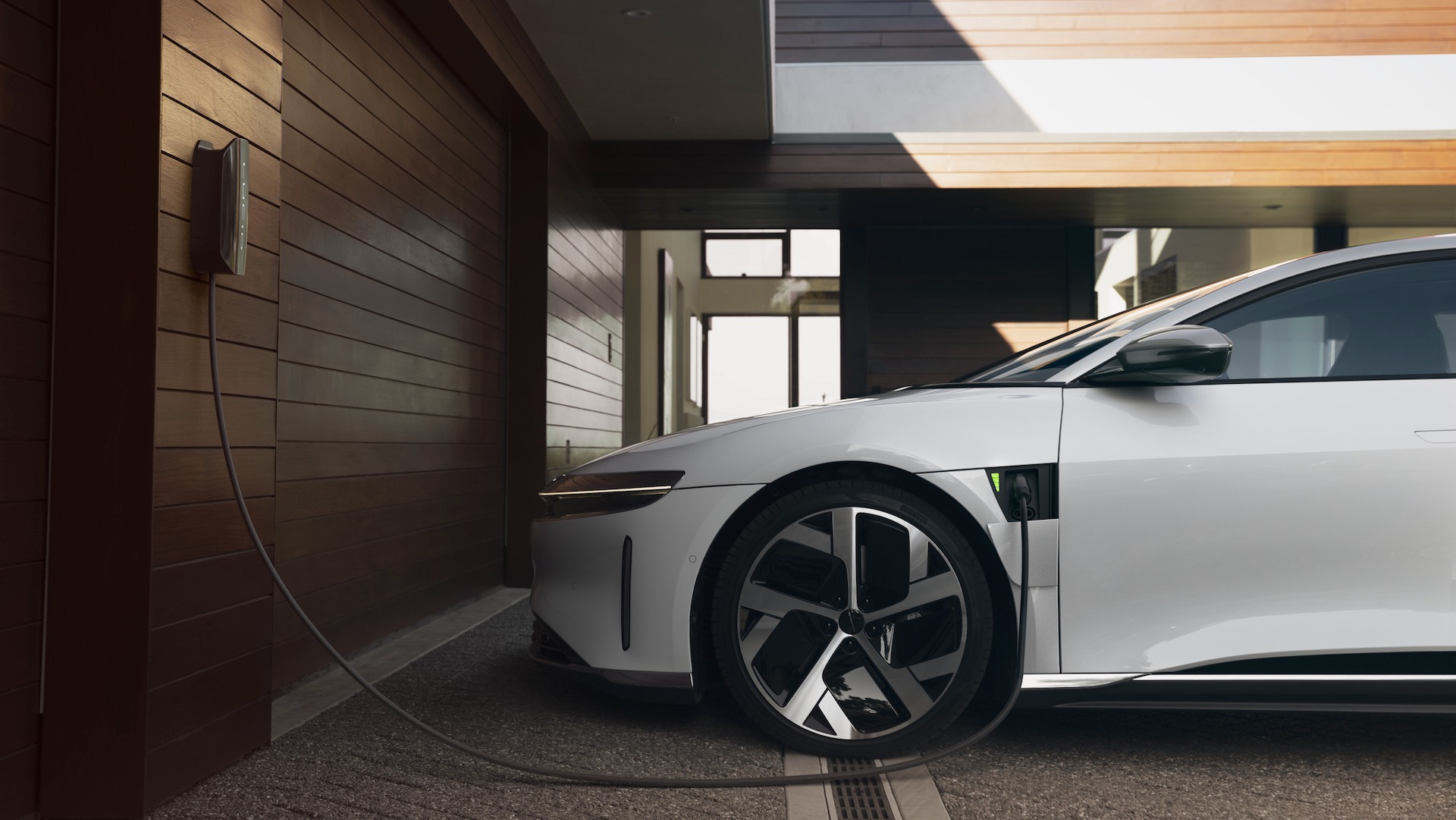
As I drove Richard Hicks’ matte blue Fisker Ocean One down Highway 95 in Palm Beach Gardens, it was hard not to like the car. It was comfortable and plenty quick, despite an accelerator pedal that felt a little wonky during the transition from positive to negative motor torque. But as the ride went on, I noticed that the cabin felt a little warm.
Since Richard took delivery of his Ocean last October, the ventilation system never worked—and he says Fisker never fixed it.
So what will happen if Fisker goes under? Will his $70,000 car ever get repaired?
Fisker’s Current State Of Health
Fisker Inc. is on life support. Its shares have plummeted in value and the EV startup is no longer available to trade on the NYSE. On March 13, the Wall Street Journal reported that Fisker had hired bankruptcy advisors amid the speculations. Less than a week later, Fisker announced that it would be pausing production for the next six weeks.
As the automaker initiated deliveries of its Ocean crossover, owners have reported many bugs and software-related flaws with its vehicles. Things are not looking good for the California-based automaker.
While Fisker and its investors are in hot water, Fisker Ocean owners might be in an even worse situation. Fisker Ocean owner Bruce Bartlett told us that talks of bankruptcy are “a huge concern.” Other Ocean owners who spoke to InsideEVs said that the situation could exacerbate what they described as poor customer service and difficulties getting issues resolved.
“I’m pretty worried I’m going to have a $70,000 paperweight soon,” Hicks told InsideEVs.
A Fisker spokesperson said the company had no comment beyond its latest financial filings.
In A Sea Of Electric Crossovers, Why Buy The Ocean?
Founded in 2016, Fisker Inc. was design legend Henrik Fisker’s second venture in the electrified automotive space. Instead of the low-volume plug-in hybrid sports sedan his original company Fisker Automotive launched, Fisker Inc.’s first vehicle was a fully-electric crossover called the Ocean.
Produced by contract manufacturer Magna Steyr and offering solid specifications and a muscular stance, the Ocean seemed to hit the sweet spot of luxury, performance, and range. The Ocean Extreme has an EPA-rated range of 360 miles and comes with a dual motor setup packing 468 horsepower, or 564 in “Boost” mode.
On paper, the Ocean checks many boxes. Not only is it fast, but it offers substantial range, and looks pretty cool. With pricing starting at $38,999 in front-wheel-drive guise and going up to $68,999 for highly-equipped low-vin versions, the Ocean’s price point fell in line with other upscale electric crossovers, like the Tesla Model Y, Audi Q4 e-tron, and Ford Mustang Mach-E.
After the Ocean’s reveal, the firm eventually revealed future vehicles, like the Alaska pickup, Pear compact crossover, and the Ronin convertible. On the surface level, Fisker showcased a future lineup with many attractive options.
Henrik Fisker’s plan was to be “asset-light,” meaning his cars would be produced under contract with existing manufacturers and factories—at least in the near term. This would cut down on the massive capital costs that tank many automotive startups. But as time went on, the cracks began to show as the company struggled with actually getting cars to customers, all while trying to reverse stalling demand for them.
A common draw among Ocean owners is their interest in the vehicle’s attractive styling, innovative features, and sustainability elements. Hicks, an Ocean owner based in Florida, says he was drawn to the car’s recycled components—110 pounds of recycled and repurposed material per vehicle. “I was intrigued from the beginning,” Hicks said.
The design appealed to many consumers and critics.“I really liked how it looked,” Massachusetts-based owner Mark Burak said. “I really liked how it drove and it was very different from all the other EVs out there.” For Burak, the Ocean was a compelling choice, though he came in expecting things to not be “100 percent perfect.”
Washington State-based owner Bruce Bartlett was a little more skeptical about purchasing an Ocean, but he said his wife really wanted it. “You know, happy wife, happy life type of thing,” Bartlett said.
Transitioning From Delivery To Ownership
After customers plopped down a $5,000 non-refundable deposit, they eventually received their $68,999 Fisker Ocean Ones. The ownership experience varies from person to person. “I’ve been very happy with it. It’s been everything I was expecting it to be. It’s fast. It’s very comfortable. It’s smooth,” Burak said.
Ocean owner Christian Fleming concurs. “I’ve never had reliability issues, but you know, it does some quirky stuff that I attribute mostly to software… but that stuff doesn’t really bother me,” he said.
But the delivery experience missed the mark for some customers. “Some random person just literally opened up the back of a truck, pulled the car out, and just left,” Hicks said. “I was like, wow, that was weird.” Most of the owners we spoke with have reported a bizarre delivery experience.
“The guy that dropped it off was just a guy with a flatbed. He didn’t know anything about the car,” Fleming said. “You know that that’s not the greatest customer service experience right there to start with.”
Bartlett’s Ocean was delivered with damage to the front bumper, which Fisker acknowledged. But since he got the car in October, he says Fisker never replaced the bumper, despite many attempts to contact the company.
“I’ve got at least 12 open case numbers” waiting to be resolved with the automaker, Bartlett said.
His Ocean has many bugs, and to make things worse, Fisker never gave him the paperwork for the Ocean. “I can’t trade it in because I don’t own the car according to the state of Washington, because we don’t have any proof of ownership,” Bartlett said.
Hicks had a similar experience. “The registration is scary because as of April I won’t be able to drive the car really officially,” he said. “I can’t drive a car with an expired registration.”
Hicks said his Ocean has been plagued with issues from the get-go. “I don’t have air conditioning,” he said. “I live in Florida, where it’s 90 degrees year-round. The air conditioning has not worked since day one. They know that,” he said.
Like Barlett, Hicks has had his fair share of issues with customer service. “It’s always that the person doesn’t respond to email, or you call but the person is really apologetic, but then nothing happens.”
“If I didn’t know any better, I would think that somebody from Tesla came and decided to sabotage their operation by driving their customer service into the ground because it’s just the way that it works,” Fleming said. “It makes no sense.”
While some owners love their Oceans and others would love they could have gone back in time and not purchased them, one problem lingers for all owners: the future of the company.
Will Fisker Oceans Lose Manufacturer Support?
As Fisker Inc. likely enters its most tumultuous stage of existence yet, Ocean owners are beginning to worry that their vehicles may fall into dereliction. As InsideEVs also reported today, long-term support for software features is of particular concern.
“I’d have to be foolish not to recognize that that’s a concern,” Burak told InsideEVs. “I’m hopeful because I honestly think that the product is really good.”
Many owners knew that buying an EV from a startup is different from buying one from a more established entity. “I think it really kind of depends on what you were expecting when you got into it,” Fleming said.
But the uncertainty of the whole situation is what puts certain owners in a state of panic. “And if they go out of business, I’ll never get an update again. There’ll be nobody to fix anything,” Bartlett said. Unlike an old electronic device, the idea of having an unsupported car can be far more consequential. And for owners like Hicks and Barlett who have vehicles that already need repairs, it begs the question of if they will ever receive them.
“I think that as a company, they didn’t manage (customer service) very well,” Fleming said. With poor customer service from the beginning, it doesn’t inspire confidence in Fisker owners that a possible restructuring will help matters.
“I don’t see it getting better,” Hicks added. “I feel bad for the other people who are in the same situation I’m in. It really stinks.”
The Path Forward
Fisker recently slashed the prices of all its inventory Oceans by up to $24,000 to generate cash flow. The FWD Ocean Sport will now start at $24,999, 35.9 percent off its original price of $38,999. The mid-tier Ultra now starts at $34,999, a 34 percent price reduction from its initial $52,999 price. But the most notable is the Extreme, which now costs $37,499. Its price before the discount was $61,499.
So far, Fisker has been mum on the cars’ future, which drives a lot of speculation among the owners who committed to Henrik Fisker’s vision. For instance, what value is the six-year or 60,000-mile basic warranty if the company backing it ceases to exist? This sense of uncertainty might be understandable for someone who purchases a discounted model, but for those who spent $68,999 for the Ocean One, it doesn’t quite bode well.
Fleming said he’s hopeful for some kind of situation where Fisker is rescued from disaster. “If somebody came in and shake things up and reorganized things a little bit, you know, they’re gonna attract more confidence and people will give them money to keep the thing going,” he said.
Others have a less ideal view of the situation. “Hopefully the car doesn’t break down because it’s at the point where now it’s really I’m not driving it that often anymore,” Hicks said. “I just don’t want to drive it with no ability to get parts. I guess if there was a bankruptcy, someone could come in and buy it. But who would want to? I mean, you’re coming into a bad situation with five thousand people that are annoyed and five thousand cars that are 2023s.”
Or, as Burak put it, “It’s sort of a wait-and-see at this point.”
Contact the author: andrew.lambrecht@insideevs.com



